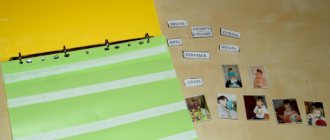When are injectable drugs prescribed?
Existing standards for the development of speech skills allow us to talk about significant delays only after 3 years. Until this age, it is possible to observe a speech therapist and a neurologist with non-drug correction. To do this, parents perform a series of exercises together with the child in a specialist’s office or at home.
If speech has not improved by the age of three, a diagnosis of “specific speech development disorder” may be made. It implies that the child lags behind age criteria in terms of ability to speak, but the level of intelligence and hearing is preserved and there are comfortable conditions for learning. A history of neuroinfections and injuries to the brain and skull bones was excluded. There is no cyclicity in the course of the disease.
But delayed speech development in itself cannot be an indication for the immediate start of injection therapy. The choice of technique involves monitoring the patient for at least six months and attempting correction using gentle methods. If they do not bring a positive result, drugs are added in the form of injections.
How do physical therapy sessions work for speech delay?
Magnetic therapy and medicinal electrophoresis procedures are prescribed in a complex manner . Initially, the session time is specially shortened in order to monitor the child’s reaction. On average, a course of treatment consists of 10–12 procedures . Physiotherapy procedures for delayed speech development at the First Children's Medical Center are carried out under the supervision of specialists in a separate room. All hardware is certified and approved for use. The medical staff will help the child feel safe and able to tolerate painless procedures. If parents wish, they can be present during medicinal electrophoresis or magnetic therapy.
Additional methods include working with defectologists and correctional specialists, increasing the time spent with the child, activating social skills, and communicating with peers. Physiotherapy for delayed speech development can be prescribed at intervals of 2–3 months in the absence of contraindications. After courses of magnetic therapy and medicinal electrophoresis, improvements are noticeable in coordination of movements, motor function, as well as in psychological development: speech reserve increases, activity in communication with other children appears, and the range of knowledge expands.
To make an appointment with a doctor
Choose a doctor
Types of medications
The most popular group of drugs for improving speech are nootropics. They allow you to improve nutrition and brain function. Due to this, cognitive functions develop.
The second most frequently used drugs are those with tissue-specific and antioxidant activity. These agents accelerate the renewal and restoration of neurons, while improving their functioning. Third on the list were neuroprotectors, which protect nerve cells from damage and exposure to environmental factors.
Cerebrolysin
This remedy is especially popular among neurologists. It helps improve metabolic processes in the cerebral cortex and prevent the death of its cells due to insufficient blood circulation. In addition to speech, the drug improves memory and increases the ability to concentrate.
1 ml of medicine contains 215.2 mg of peptides isolated from pig brain. Up to 5 ml of the drug is injected into the muscle. The dosage for a child is selected at the rate of 0.1-0.2 ml per 1 kg of weight.
If a larger amount is required, it is administered through a vein. More than 10 ml is indicated for use using an infusion system. The therapeutic course ranges from 10 to 20 days with a frequency of use of 1 time per day.
Cortexin
The drug is classified as a stimulant of cognitive activity of the brain. It makes it easier to remember and learn new functions, including speech. The medicine may be prescribed to protect the brain from severe stress.
One bottle contains 10 mg of active substance, which is polypeptide fractions soluble in water. Glycine in the amount of 12 mg was added as a stabilizer to Cortexin. Together they form a lyophilized powder that is pure white or yellowish in color.
Due to the small size of the molecules of the active substance, the drug is able to penetrate the blood-brain barrier. This is how it directly affects the neurons of the brain. As a result, the ability to learn and remember increases, and attention improves. The ability of the nervous system to respond to stimuli also increases. This increases the child's activity and curiosity.
Cortexin allows you to configure the body to produce the optimal amount of serotonin, dopamine and gamma-aminobutyric acid (GABA). At the same time, the bioelectrical activity of the brain is normalized. The drug also protects the brain from the effects of free radicals.
The medicine has the greatest effect when included in complex therapy. It is used as a remedy for disorders of cognitive functions, including speech, a drop in the level and speed of learning, and delayed psychomotor development. Other indications include head injuries and circulatory disorders in the vessels of the brain.
The administration of Cortexin is accompanied by painful sensations. Therefore, it can be diluted in a 0.5% solution of novocaine (procaine). For one injection, 1-2 ml of anesthetic is sufficient. This method is not suitable for children, as the risk of allergic reactions increases. Therefore, for them, the drug is diluted with isotonic sodium chloride solution and heated to 25-29 °C.
The medicine may form foam, so it should be drawn carefully along the wall of the bottle.
Injections are performed once daily (preferably in the morning) intramuscularly. The shoulder area or the front of the thigh is suitable for this (used for babies). The duration of therapy is 10 days. The dosage depends on the patient’s weight: less than 20 kg, 0.5 mg/kg is enough, and 20 kg and above - 10 mg. You can repeat the course of treatment after 3-6 months.
Gliatilin
The drug is packaged in 4 ml ampoules, each of which contains 1000 mg of choline alfoscerate. In total, a cardboard box can contain 1 or 3 bottles, sealed in a plastic cell. The medicine belongs to the group of neuroprotectors that protect neurons from damage.
Gliatilin acts on cholinergic receptors, as a result of which impulses are transmitted more quickly from one neuron to another. The drug also affects the membranes of nerve cells, facilitating this transition. Among other properties, the production of an optimal dose of acetylcholine is noted to maintain a calm state of the patient.
When taken orally, 88% of the active substance passes through the blood-brain barrier to neurons. Metabolites accumulate in the brain - glycerophosphate and choline. The first improves membrane permeability and impulse transmission, and the second has a positive effect on cholinergic receptors. The drug is excreted 85% by the lungs, breaking down to carbon dioxide, as well as by the intestines and kidneys.
Cerepro
This drug is considered an analogue of the previous one. Its 1 ml contains 250 mg of glycerylphosphorylcholine hydrate. The medicine is bottled in 4 ml bottles, which are grouped into 3, 5 or 10 pieces in thin cardboard packages.
The drug solution can be administered either intramuscularly or intravenously. It has no color or sediment. The medicine belongs to the group of nootropics and belongs to the central type cholinomimetics. It helps maintain the flexibility and integrity of the cell membrane by stimulating the synthesis of acetylcholine. As a result, blood flow in the vessels of the brain accelerates, and the patient’s cognitive abilities increase.
Actovegin
This medicine increases the metabolic activity of tissues, including the brain. One 10 ml ampoule contains 400 mg of blood hemoderivative, devoid of peptides (in dry form). Sodium chloride is also detected, which remains from the raw material for the drug and has no effect on the body.
Actovegin can be administered either intramuscularly or intravenously in the form of an injection or drip. It can cause severe allergic reactions, so many people prefer to conduct a hypersensitivity test before use.
Piracetam
The drug is a cyclic gamma-aminobutyric acid derivative. The nootropic effect is achieved due to the ability of the active substance to bind to the phospholipid heads of the neurocyte membrane. This allows you to improve its protective properties and increase functionality in general.
The drug also affects postsynaptic receptors, facilitating the transmission of impulses along neurons. It is prescribed to enhance intellectual activity, including the development of speech skills in a child. The effect is achieved by establishing interhemispheric interaction and enhancing intersynaptic conduction in the subcortical layers of the brain.
Piracetam improves memory and attention, increases learning ability and self-awareness, and increases the effectiveness of intellectual activity. However, it is devoid of psychostimulating and sedative properties. The optimal amount of the active substance is formed after 3 days of use and remains until the end of the course. The bioavailability of the drug is close to 100%. It easily passes through the blood-brain and blood-placental barrier. The accumulation of the drug occurs in the cerebral cortex, mainly in the occipital, parietal and frontal lobes, as well as in the basal ganglia and cerebellum.
cost of treatment
The cost of treatment in our center is calculated individually, depending on the severity of the disease, its duration and the presence of complications.
Each patient is prescribed comprehensive sequential treatment in the form of a course of individually selected procedures.
In addition to the procedures, the treatment course includes a free follow-up appointment.
Initial and repeat appointments, as well as medications prescribed by a doctor, are paid separately. The cost of the initial appointment is 3,000 rubles.
A 10% discount is provided for a one-time payment for a treatment course.
Indications for use
In children, Cortexin is used in the complex treatment of the following diseases:
- Cerebral palsy.
- Developmental disorders of learning skills, speech and language.
- Inflammatory diseases of the brain.
- Perinatal damage to the nervous system.
- Cognitive disorders.
- Attention deficit hyperactivity disorder.
- Encephalopathy.
Due to its universal action, the product can be used in all periods of the disease: from acute to restorative.
To develop a therapeutic effect, you must take Cortexin for at least 2 weeks.
More details about these diseases can be found in separate articles.
Analogues of Cortexin
The closest analogues of Cortexin in structure and origin are Cerebrolysin and Cerebramin.
Cerebrolysin is the closest analogue of Cortexin in origin and action. The drug is interesting because it is the very first peptide nootropic created. During its existence, vast experience has been accumulated about its effects. Compared to Cortexin, older technologies are used to obtain Cerebrolysin. Therefore, after taking it, the risk of developing side effects is higher.
Cerebramin is classified as a dietary supplement (BAA). Dietary supplements are substances that are used as an additional source of components necessary for human life. They are not medicines. This means that this category of products does not undergo the same rigorous testing as drugs, which may make them less safe and effective.
There are a number of other drugs that sometimes replace Cortexin: Mexidol, Fezam, Cavinton, Ceraxon, Pantogam. However, they have different mechanisms of action, so calling them analogues is not entirely correct. Indications for their use may differ from each other, and the combined use of drugs usually gives a more pronounced effect.
You can learn more about the differences between Cortexin and other common medications used for neurological diseases from separate articles (Links to articles).








